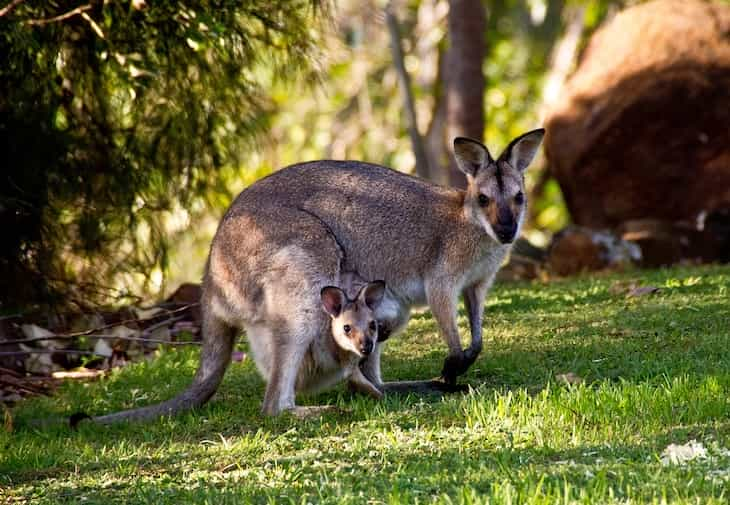Being one of the most recognizable symbols of Australia, wallabies aren't that well-known around the world.
These animals might be pretty much like kangaroos, but they also have some unique features helping them to stand out.
Let's find out more about them.
Appearance
Wallabies are small to medium-sized marsupials with compact bodies and long, powerful hind legs.
They have a tail that helps them balance while hopping.

Their fur can range in colors including gray, brown, or reddish-brown.
Hopping
Wallabies are known for their incredible hopping ability.
They use their strong hind legs to hop and can reach speeds of up to 30 miles per hour (48 kilometers per hour).
Hopping is their primary mode of transportation.
Marsupials
Like other marsupials, wallabies give birth to relatively undeveloped young, called joeys.
After birth, the tiny joeys crawl into their mother's pouch, where they continue to develop and grow.
Herbivores
Wallabies are herbivorous animals, which means they mainly eat plants.
Their diet consists of grass, leaves, shoots, and fruits. They have specialized teeth for grinding vegetation.
Social Behavior
Wallabies are generally social animals and live in small groups known as mobs.
Mobs usually consist of several females, their offspring, and a dominant male.
They communicate with each other through various vocalizations and body movements.
Adaptations
Wallabies have certain adaptations that help them survive in different environments.
For example, their large ears enable them to detect predators and threats.
They also have strong hind legs for quick escapes and powerful tails for balance.
Habitat
Wallabies are found in various habitats, including forests, woodlands, and grasslands.
Different species of wallabies have different habitat preferences, ranging from coastal areas to mountainous regions.
Nocturnal or Crepuscular
Some species of wallabies are primarily nocturnal, meaning they are most active during the night.
Others are crepuscular, which means they are active during dawn and dusk.
Previously, we talked about butterflies.









